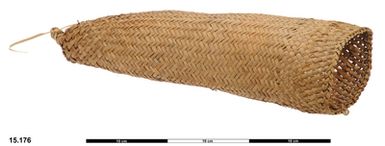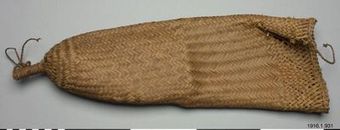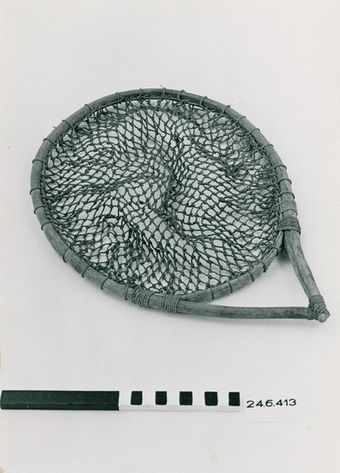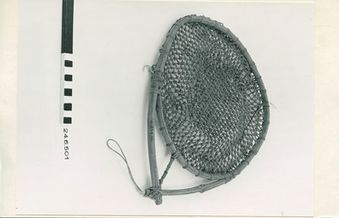Connect with Horniman Museum and Gardens
Contact this content partner to get more information about this item.
sago strainer
- Description:
- Sago Strainer, Kiwai People, Goaribari Island, Gulf Province, Papua New Guinea. Like many other parts of New Guinea’s densely-forested southern coastal floodplain, the environment of the Papuan Gulf is impractical for the long-term cultivation of many of the tree crops relied upon by people elsewhere in the Pacific. The Sago Palm (Metroxylon sagu) is an exception, however, as it is capable of adapting to the Papuan Gulf’s vast seasonal changes in water level. For the Kiwai people, therefore, the soft and starchy inner heartwood of the sago is a nutritious, easily harvested and abundant source of carbohydrates. This woven tool is vital for processing the sago: The sago paste is first separated from the outer bark and the fibrous pulpy pith of the palm’s trunk by greatly diluting it with fresh water, and then strainers such as these enable the sago paste to be thickened and separated from the excess water, which simply runs out of the holes. Leaves. Early 20th Century. Formerly in the private collection of Prof A. C. Haddon, and very likely acquired by him from Gunnar Landtman, who collected among the Kiwai in 1910-1912 and made a large collection for Haddon. Basketry sago strainer of conical form, tied off at the closed end.
- Format:
- image
- Collections:
- Horniman Museum and Gardens
- Content partner:
- Horniman Museum and Gardens
- Availability:
- Not specified
-
Copyright status: All rights reservedFind out more about what you are able to do with this itemThis item is all rights reserved, with means you'll have to get permission from Horniman Museum and Gardens before using it. For more information, please see our use and reuse page.More informationHorniman Museum and Gardens has this to say about the rights status of this item:
http://rightsstatements.org/vocab/InC/1.0/
What can I do with this item?Non-infringing useNZ copyright law does not prevent every use of a copyright work, and this item may be hosted by an international institute or organisation. You should consider what you can and cannot do with a copyright work.No sharingYou may not copy and/or share this item with others without further permission. This includes posting it on your blog, using it in a presentation, or any other public use.No modifyingYou are not allowed to adapt or remix this item into any other works.No commercial useYou may not use this item commercially.
Welcome and warm Pasifik greetings
The information on this site has been gathered from our content partners.
The names, terms, and labels that we present on the site may contain images or voices of deceased persons and may also reflect the bias, norms, and perspective of the period of time in which they were created. We accept that these may not be appropriate today.
If you have any concerns or questions about an item, please contact us.



